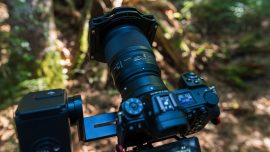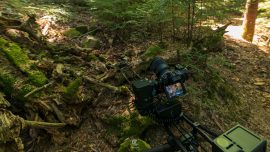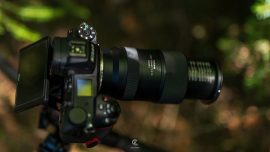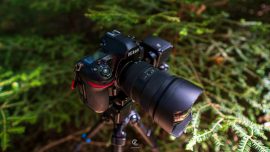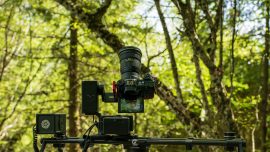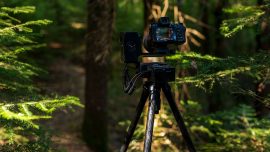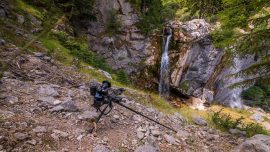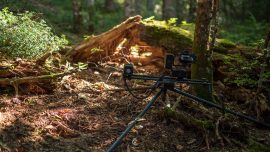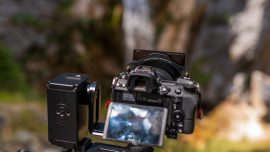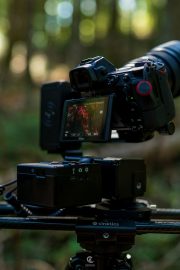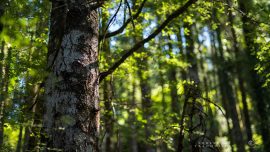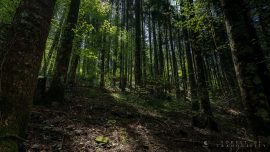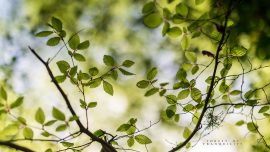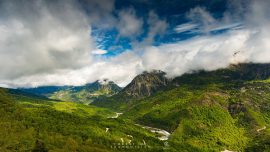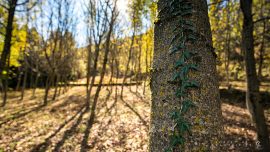“Forest of Tranquility”, a short non-narrative experimental documentary film, capturing the serene atmosphere inside the forests of Epirus Greece, is my 2nd personal experimental short film, after the award-winning time-lapse film “Keep Looking Up” (see [NR] blog post).
- Directed and Filmed by Christophe Anagnostopoulos
- Original Music by Dreamstate Logic www.dreamstatelogic.com
- “And into the forest I go, to lose my mind and find my soul.” – John Muir
The idea for this project was formed one year ago and during the preparation stage of this project, I was thinking about the filming approach and what the film should look like.
My thoughts were that we live in a fast-paced world with an infinite number of useful as well as not so useful information that the brain has to process daily, and as a result, it gets so easy to “disconnect” from nature, due to the routine of everyday life.
I decided to make things simpler, and just film moments inside nature where the pace remains the same from the beginning. To film sequences that show the simplicity of nature and make the mind stop down for a moment.
Scenes like the flapping wings of a butterfly, a spider’s nest that dances with the wind or just a small ant that searches for food.
The days I spent inside the forests filming this project were truly amazing and inspiring, as also rejuvenating. It would be great if everyone could spend more time in nature.
Forest of Tranquility Project was filmed in the mountains of Epirus, Greece and the filming took place on two different time periods, April and September 2019.
The location was chosen carefully due to its breathtaking beauty and most importantly, because it gave me the ability to be all alone in the forests for some days, hearing only natural sounds and nothing mechanical.
Festival Awards & Official Selections (so far)
- Best Editing Award Chhatrapati Shivaji International Film Festival
- Official Selection Independent Shorts Awards
- Official Selection Indie Short Fest
- Official Selection Atlanta Docufest
- Official Selection Five Continents Int. Film Festival
- Official Selection Rome Independent Prisma Awards
- Official Selection No Words Int. Film Festival
BTS YouTube Video
GEAR
- Nikon Z6
- Nikon D850
I used only two (2) cameras for both actual filming and behind the scenes footage, and I have to say that Nikon Z6 amazed me in every aspect and especially in terms of video.
Please note that filming took place before Nikon released the ProRes Raw video update for the Z6/Z7, using only a custom FLAT profile on camera, so I suppose that the quality after the update must be even better.
The produced video is of the highest quality and when the camera is attached to a high optical quality lens like the new Tokina Opera and Firin series, it can create amazing footage.
To be able to use Tokina Firin E-Mount lenses (20mm & 100mm) on Nikon Z6, I used the Techart TZE-01 adapter and I only have the best things to say about this small adapter.
Both lenses performed exceptionally in every aspect of the Nikon Z6 and I’m really happy that I can use them in Z system.
For the Nikon D850 is needless to say anything, this camera is by far the best DLSR I have ever used. It is known for its outstanding image quality and performance, but it is also is a very capable video camera.
Lenses
Every video and timelapse sequence, both in actual filming and Behind the Scenes, was filmed only with Tokina lenses (F and E Mounts) and I used the following:
Prime Lenses
Zoom Lenses
I have stated many times, both in my reviews and in general, about the exceptional performance and high optical quality of the new Opera and Firin series lenses.
These lenses are amazing in both photography and video shooting and I strongly suggest them.
My personal favorites are by far the Tokina Opera 50mm F/1.4 (a perfect match for my Nikon D850) and the Tokina Firin 20mm F/2 AF (a perfect landscape/travel/walk-around combo with the Nikon Z6).
But, there are also the lenses of the previous series, the ATX-Pro line, which are also very good in terms of optical quality and during the filming of this project I used them on many scenes with very good results.
Tripods
Only two (2) tripods were used for the production, and my choice was the Professional Carbon 800 series from Slik, due to their low overall weight, heavy payload capability and sturdiness, but most importantly, for being able to be very close to the ground. They become almost flat after removing the bottom part of the center column.
Being more specific, they could hold the heavy payload of the motion control system plus camera and lens, in a steep angle very close to the ground, and remain very steady for real-time video sequences.
Motion Control System, Timelapse Gear & Gimbal
- Slik ECH-630 Star Tracker (in Timelapse Mode)
- Cinetics Lynx 3-Axis Motion Control System
- Timelapse+ View Advanced Intervalometer
- DJI Ronin SC
For many of the scenes of the final release, as also in the majority of the footage I filmed in total for this project, my goal was to create slow but dynamic motion and to achieve this, I used two dedicated motion control devices.
It might seem strange, but on some occasions, I used the Slik ECH-630 to create panning sequences and the results were really great!
Although its main use is to track the night sky, creating sharp long exposure images of Nebulas or the Milky Way Galaxy, this ultra-compact device is very capable and can create one (1) axis motion sequences with ease.
The majority of the footage was filmed with the Cinetics Lynx 3-axis motion control system, a very capable, sturdy, durable, lightweight and portable motion control system that can be used for both real-time video and timelapse filming.
Although its main carbon slider is only 60cm, it can easily extend to 120cm with the included-in-the-case extension rods, and still maintain its portability and light weightless.
So far in both my professional and personal work I had the chance to use many different motion control systems, each of them with its own logic in terms of operation and setup, but I found the Lynx to be more portable and still capable in every aspect, as also to hold a relatively heavy setup compared to other 3-axis options.
The most important thing though was the ability to create dynamic 3-axis scenes with it, by using only one tripod.
Lastly, for my workflow, it is important the motion control system to be able to connect to the Timelapse+ View Advanced Intervalometer and that was also a plus for the Lynx.
Timelapse+ View Advanced Intervalometer is a fantastic piece of gear for creating a smooth day to night transitions in timelapse and I rely 100% on it even in constant light or simple scenes, as the device is capable to detect even the smallest changes in light, thus making the necessary adjustments on camera avoiding flickering issues.
In the opening scene with the fog, light was changing for the whole duration of the shooting, but still, no flickering is visible thanks to View.
Filters
- Cokin Clearsky
- Hoya Starscape
- Hoya GradND10
- Cokin Nuances Extreme ND8
- Hoya Circular Polarizer
- Kenko PROND100
I love working with filters as they give me the ability to control or manipulate available light according to current project needs, and as a passionate landscape photographer, I currently use Neutral Density and Graduated ND filters, as also Circular Polarizer filters.
I’m also using them in film-making as well, especially when the amount of light must be balanced in real-time video scenes.
Being an “old” school type in photography and film-making, I prefer to use actual filters rather than apply heavy edits on post-production.
Although in the official release version of the film there are no Astro timelapse scenes, I have filmed four (4) of them, by using two of the best light pollution filters currently available in the market, the Hoya Starscape and the Cokin Clearsky.
Both filters are exceptional in blocking visible light pollution, while also they increase image total contrast and purple/magenta saturation, something very important for astrophotographers.
Sound
- Tascam DR-05X Sound Recorder
- Rode VideoMicro
In documentaries, sound is also important as it has to be real and natural. I used the relatively cheap but very capable Tascam DR-05x Sound Recorder to capture the natural ambient sounds of the locations of filming. I recorded nature sounds for more than twenty-four (24) consecutive hours in order to capture the reality of the location, and how the real natural sound at the moment of filming could be heard.
Christophe Anagnostopoulos is an award-winning documentary filmmaker and professional timelapse photographer, based in Greece.
His involvement with photography and cinematography began at a very young age, having as first incentives classical landscape images and experimental time-lapse / documentary films, without ceasing to experiment and evolving his techniques following modern-day standards and needs. He is a lecturer in specialized workshops and a speaker at international exhibitions, since 2017 he is Global Ambassador of Tokina and Hoya, and his collaborations include well-known companies in the field of photography. His personal projects have won international awards from renowned festivals, and his photographs have participated in major international trade fair exhibitions.
Official Website: www.christopheanagno.com
Vimeo: https://vimeo.com/christopheanagno
Facebook: https://www.facebook.com/christophe.anagnostopoulos
IMDB: https://www.imdb.com/name/nm9542541
If you have an interesting idea for a guest post, you can contact me here.


